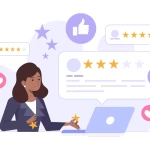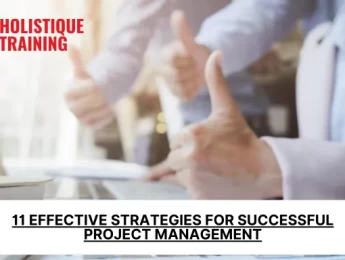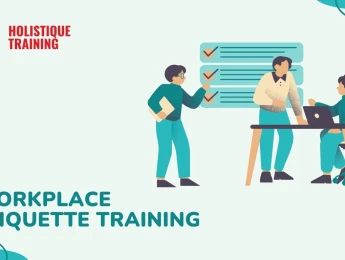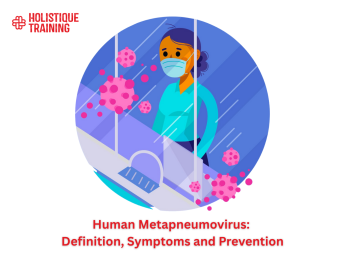- Table of Contents
- Introduction
- What Is Customer Service?
- Table 1: Key Customer Service Touchpoints
- What Is Customer Service Excellence?
- 1. Consistency
- 2. Personalisation
- 3. Proactivity
- 4. Empathy
- 5. Timeliness
- Why Is Customer Service Excellence Important?
- Customer Retention and Loyalty
- Positive Reputation and Brand Image
- Competitive Differentiation
- Enhanced Profitability
- Cost Savings
- Customer Insights and Innovation
- Regulatory Compliance and Risk Mitigation
- 10 Steps to Achieve Customer Service Excellence
- 1- Define Clear Customer Service Standards
- 2- Train and Empower Your Team
- 3- Foster a Customer-Centric Culture
- 4- Listen Actively to Customer Feedback
- 5- Anticipate Customer Needs
- 6- Personalise Customer Interactions
- 7- Communicate Transparently
- 8- Implement Efficient Technology Solutions
- 9- Measure and Analyse Key Metrics
- 10- Continuously Improve
- Bad Customer Service vs. Excellent Customer Service: How Do They Look Like?
- Response Time:
- Empathy:
- Efficiency:
- Inconsistency:
- Communication:
- Personalisation:
- Proactivity:
- Problem Resolution:
- Feedback Handling:
- Culture:
- Handling Complaints by Practising Customer Service Excellence
- 1. Listen Actively:
- 2. Empathise and Apologise:
- 3. Resolve Swiftly:
- 4. Follow Up:
- 5. Learn and Improve:
- 6. Document and Share:
- 7. Implement Preventative Measures:
- 8. Communicate Changes:
- 9. Use Technology Wisely:
- 10. Train Your Team:
- 11. Empower Your Team:
- 12. Maintain a Positive Attitude:
- 13. Use Complaints as Opportunities:
- The Impact of Technology on Customer Service Excellence
- a. Chatbots and AI-Powered Assistants
- b. Predictive Analytics
- c. Self-Service Portals
- d. Social Media Listening
- e. Personalisation Engines:
- Conclusion
Introduction
Imagine this scenario: you walk into a store, and from the moment you enter, the staff greet you with warm smiles, attend to your every need promptly, and ensure you leave with a feeling of utmost satisfaction. That, my friends, is the magic of customer service excellence.
But what exactly is customer service? What makes it excellent, and why is it so vital in today's business landscape? In this comprehensive guide, we will delve into the world of customer service, understand what sets excellent service apart from the rest, and explore ten actionable steps to achieve customer service excellence. We'll also discuss the stark differences between bad and excellent customer service and how to handle complaints while practising customer service excellence.
What Is Customer Service?
Customer service is more than just a department in a company; it's a philosophy. It encompasses the entire customer journey, from the first point of contact to post-purchase support. At its core, customer service involves understanding, meeting, and exceeding customer expectations.
It includes various touch points such as in-person interactions, phone calls, emails, live chat, and social media interactions. Customer service is the bridge that connects businesses to their customers, helping build relationships, trust, and loyalty.
Table 1: Key Customer Service Touchpoints
Touchpoint | Description |
In-person | Face-to-face interactions in a physical location |
Phone calls | Conversations with customers over the phone |
Emails | Written correspondence through email |
Live chat | Real-time online chat support |
Social media | Engaging with customers on platforms like Twitter, Facebook, etc. |
What Is Customer Service Excellence?
Customer service excellence represents the pinnacle of customer-centricity within an organisation. It is not merely about meeting customer expectations; it goes beyond that by consistently exceeding them in every conceivable way. Achieving customer service excellence requires a holistic approach that permeates the entire fabric of a company, from its culture and values to its day-to-day operations.
Here are some key aspects that illuminate what customer service excellence truly entails:
1. Consistency
Customer service excellence is not a one-time feat but a sustainable commitment. It demands that exceptional service is consistently delivered across all customer touchpoints and interactions. Whether a customer engages with your company in person, via phone, email, live chat, or through social media, they should consistently encounter the same high level of service. This consistency builds trust and reinforces your brand's reputation for reliability.
2. Personalisation
In the realm of customer service excellence, one size does not fit all. It requires the ability to tailor service to individual customer needs and preferences. This entails more than just using a customer's first name in an email; it involves understanding their unique requirements, history, and preferences. It might mean recognising their past interactions and offering personalised solutions or product recommendations that genuinely resonate with their situation.
3. Proactivity
Customer service excellence involves not just reacting to customer inquiries and issues but also proactively addressing potential problems before they even surface. This proactive stance showcases a company's commitment to anticipating customer needs and actively working to meet them. For example, if a customer encounters an issue with their product, a proactive approach might involve reaching out to them before they even contact customer support, offering a solution and ensuring their satisfaction.
4. Empathy
Empathy is at the heart of customer service excellence. It means understanding a customer's feelings and concerns and demonstrating genuine care and concern. When customers feel that a company truly understands and empathises with their challenges, it fosters a sense of connection and trust. Empathy is not just a script or a checklist; it's a sincere and compassionate response to customer needs and emotions.
5. Timeliness
In the fast-paced world of business, time is a precious commodity for both customers and companies. Customer service excellence dictates that issues and inquiries are addressed promptly and efficiently. This involves respecting the customer's time by minimising wait times, providing quick resolutions, and ensuring that the customer doesn't feel their valuable time is being wasted.
In essence, customer service excellence transcends the transactional nature of business interactions. It's about creating meaningful, memorable experiences for customers that leave a lasting positive impression. When customers experience this level of service consistently, they become not just satisfied but fiercely loyal advocates for your brand. Customer service excellence isn't just an organisational goal; it's a philosophy that shapes every aspect of how a company operates and how it values and treats its customers.
Why Is Customer Service Excellence Important?
According to123FormBuilder, a positive customer service experience influences 81% of customers to consider making repeat purchases, while 70% admit that their buying choices are influenced by the quality of customer service. That is why customer service excellence is not a luxury but a necessity in today's competitive business landscape. However, it doesn’t stop here. Here are some other reasons why it's crucial:
Customer Retention and Loyalty
Customer service excellence plays a pivotal role in retaining customers and fostering long-term loyalty. When customers receive exceptional service, they are more likely to return to your business for future purchases and transactions. Loyal customers tend to spend more and are often less price-sensitive, contributing significantly to your company's bottom line. Moreover, they become vocal advocates for your brand, referring friends and family, and expanding your customer base organically.
Positive Reputation and Brand Image
Exceptional customer service is a potent driver of a positive reputation and a strong brand image. When customers have consistently positive experiences with your business, they are more inclined to share their satisfaction with others. Positive word-of-mouth marketing can be incredibly influential, attracting new customers and enhancing your brand's credibility and trustworthiness in the eyes of the public.
Competitive Differentiation
In today's competitive marketplace, where products and services are often similar, customer service excellence becomes a powerful differentiator. It's a way for your business to stand out from the crowd and give consumers a compelling reason to choose your brand over your competitors. Customers are more likely to choose a business that consistently delivers superior service, even if it means paying a slightly higher price.
Enhanced Profitability
Exceptional customer service can directly impact your company's profitability. Satisfied customers are not only more likely to make repeat purchases, but they are also willing to pay more for better service. This willingness to spend more on a superior customer experience can significantly boost your revenue and profit margins, ultimately contributing to the financial health of your business.
Cost Savings
Providing excellent customer service can lead to cost savings in the long run. When customers are satisfied and their issues are resolved efficiently, it reduces the need for extensive problem-solving efforts and repeated marketing campaigns to attract new customers. Additionally, it can lower the cost associated with handling complaints and managing customer churn.
Customer Insights and Innovation
Engaging in meaningful interactions with customers through excellent service provides valuable insights into their needs, preferences, and pain points. These insights can inform product or service improvements and drive innovation within your organisation. By consistently gathering and analysing customer feedback, you can adapt and evolve to meet changing market demands effectively.
Regulatory Compliance and Risk Mitigation
In some industries, adhering to high standards of customer service excellence is not only advisable but also mandatory for regulatory compliance. Failing to meet these standards can result in legal and financial consequences. By prioritising customer service excellence, you mitigate the risk of regulatory non-compliance and the potential negative consequences it may bring.
Now that we understand the importance of customer service excellence, let's explore ten actionable steps to achieve it.
10 Steps to Achieve Customer Service Excellence
1- Define Clear Customer Service Standards
The foundation of customer service excellence lies in having well-defined and communicated standards. This involves creating a comprehensive customer service policy that outlines expectations, response times, communication etiquette, and problem resolution procedures. These standards serve as a guiding light for your employees, ensuring that everyone understands the level of service expected from them.
However, it's not enough to create standards and policies; they must also be regularly reviewed and updated to remain relevant in an ever-changing business landscape. Moreover, these standards should be aligned with your company's overall mission and values, reinforcing the importance of customer-centricity throughout the organisation.
2- Train and Empower Your Team
Your frontline employees are the face of your company and, therefore, play a pivotal role in delivering customer service excellence. Invest in comprehensive training programmes that equip your team with the skills and knowledge needed to provide exceptional service. Training should encompass not only technical aspects but also soft skills such as communication, empathy, and problem-solving.
Empower your employees to make decisions and take actions that benefit the customer without needing constant approvals. This empowerment fosters a sense of ownership and responsibility, enabling employees to resolve issues swiftly and effectively, even in complex situations.
3- Foster a Customer-Centric Culture
Customer service excellence should be ingrained in your company's culture, values, and ethos. Every member of your organisation, from the CEO to the newest recruit, should understand the central importance of customers and their role in delivering excellence.
Promote a culture of continuous improvement by recognising and rewarding employees who consistently go above and beyond to serve customers. Celebrate success stories that exemplify outstanding customer service to inspire others in your organisation.
4- Listen Actively to Customer Feedback
Listening to your customers is essential for identifying areas where you can improve your service. Solicit feedback through various channels, including surveys, social media, email, and direct communication. Encourage open and honest feedback by assuring customers that their opinions matter and that their feedback will be acted upon.
However, collecting feedback is only part of the equation. Analyse the data collected to identify trends, patterns, and recurring issues. This analysis should inform decision-making, allowing you to make necessary adjustments and improvements that align with customer expectations.
5- Anticipate Customer Needs
Proactive service is a hallmark of customer service excellence. Train your team to anticipate customer needs based on historical data and insights. For instance, if a customer typically orders a specific product at a certain time of year, you can proactively offer it to them before they even think of making the purchase.
This approach not only delights customers but also enhances their overall experience. It demonstrates that you understand their preferences and are committed to making their lives easier, further solidifying their loyalty.
6- Personalise Customer Interactions
Treating each customer as an individual, rather than just another transaction, is a fundamental aspect of customer service excellence. Personalisation involves using a customer's name, remembering their preferences, and tailoring your interactions accordingly.
But it goes beyond these basics. It's about recognising their unique history with your business and using that information to provide a seamless and customised experience. Whether it's remembering a customer's past orders, acknowledging their milestones with your company, or offering personalised product recommendations, personalisation shows that you value them as unique individuals.
7- Communicate Transparently
Transparency builds trust, and trust is a cornerstone of customer service excellence. Be honest and forthright in your communications with customers. If there are delays, issues, or unforeseen challenges, communicate them openly and promptly. Offer solutions and keep customers informed throughout the resolution process.
Moreover, transparency extends to pricing, policies, and terms and conditions. Ensure that customers have easy access to this information, and avoid hidden fees or surprises that could erode trust. Clearly explain your processes, so customers know what to expect.
8- Implement Efficient Technology Solutions
Leverage technology to streamline customer interactions and enhance service delivery. Implement a robust Customer Relationship Management (CRM) system that centralises customer data, including history, preferences, and past issues. A CRM system allows your team to access comprehensive customer profiles, enabling more personalised and efficient service.
Consider incorporating automation and AI-driven tools for tasks such as chatbots for basic inquiries and automated follow-up emails. These technologies can significantly improve response times and efficiency while freeing up your human agents to focus on more complex and value-added interactions.
9- Measure and Analyse Key Metrics
To continuously improve customer service, you must measure its effectiveness. Track key performance metrics such asCustomer Satisfaction Score (CSAT),Net Promoter Score (NPS), and Customer Effort Score (CES). These metrics provide valuable insights into customer sentiment and their overall experience with your brand.
Analyse the data collected to identify areas where you can make improvements. For example, if you notice a decline in CSAT scores, investigate the root causes and take corrective actions to address the issues. Regularly reviewing and acting upon these metrics ensures that you are continually striving for excellence.
10- Continuously Improve
Customer service excellence is not a destination but a journey of continuous improvement. Your organisation should adopt a mindset that embraces change and adaptation to evolving customer needs and expectations. Regularly review and update your customer service standards and training programmes to stay relevant and aligned with industry best practices.
Stay informed about industry trends and emerging technologies that can enhance your service delivery. Encourage a culture of innovation where employees are empowered to suggest improvements and provide feedback on ways to enhance customer service.
Bad Customer Service vs. Excellent Customer Service: How Do They Look Like?
To truly understand the importance of customer service excellence, let's compare and contrast bad customer service with excellent customer service through the eyes of a customer:
Response Time:
- In bad customer service, customers experience slow response times, whether on hold, in a queue, or waiting for an email response.
- In excellent customer service, response times are swift and efficient, ensuring customers do not feel their time is being wasted.
Empathy:
- Bad customer service often lacks empathy, with employees appearing indifferent to customer concerns and issues.
- Excellent customer service is marked by genuine empathy and understanding, with employees demonstrating care for customer problems.
Efficiency:
- In bad customer service, resolving issues is often inefficient and requires multiple steps, leading to customer frustration.
- Excellent customer service emphasises quick and effective issue resolution, often achieving it in a single interaction.
Table 2: Differences between bad and excellent customer service

Inconsistency:
- Bad customer service often results in inconsistent service quality, leaving customers uncertain about what to expect.
- Excellent customer service maintains a consistently high level of service quality across various touchpoints and employees.
Communication:
- In bad customer service, communication is typically poor, with vague or unclear responses that leave customers frustrated.
- Excellent customer service places a premium on clear, transparent, and honest communication throughout the entire interaction.
Personalisation:
- Bad customer service adopts a one-size-fits-all approach, making customers feel like mere numbers.
- Excellent customer service prioritises personalisation, offering tailored interactions that address each customer's individual needs.
Proactivity:
- Bad customer service tends to be reactive, addressing customer concerns only when they are raised.
- Excellent customer service is proactive, anticipating and addressing customer needs before they become issues.
Problem Resolution:
- Bad customer service often requires issue escalation, causing delays and customer frustration.
- Excellent customer service empowers employees to resolve issues promptly and effectively, reducing customer effort.
Feedback Handling:
- In bad customer service, feedback is often ignored or dismissed, hindering improvement efforts.
- Excellent customer service actively listens to customer feedback and leverages it for continuous improvement.
Culture:
- In organisations with bad customer service, customer satisfaction may not be a priority, and employees may lack the necessary training and motivation.
- Excellent customer service is supported by a customer-centric culture, where every employee recognises the value of delivering exceptional service and strives to do so consistently.
In summary, the contrast between bad customer service and excellent customer service is profound and has a significant impact on customer satisfaction, loyalty, and overall business success. The choice to prioritise customer service excellence is a strategic one that can differentiate your business in a competitive market and lead to enduring customer relationships.
Handling Complaints by Practising Customer Service Excellence
Customer complaints are inevitable, but they can be turned into opportunities for building stronger customer relationships. Here's how to handle complaints with customer service excellence:
1. Listen Actively:
When a customer reaches out with a complaint, it's essential to practise active listening. This means giving the customer your full attention, allowing them to express their concerns without interruption, and demonstrating empathy. Active listening not only helps you understand the problem but also conveys to the customer that their voice is valued and respected.
2. Empathise and Apologise:
Empathy is a cornerstone of excellent customer service. Show genuine understanding and concern for the customer's situation. Even if the issue isn't your fault, apologise for any inconvenience they've experienced. An empathetic and sincere apology can go a long way in diffusing a tense situation and building rapport.
3. Resolve Swiftly:
Excellent customer service emphasises quick issue resolution. Encourage your customer service team to have the authority and tools necessary to resolve problems promptly. Empowered employees can often provide immediate solutions without the need for escalations or prolonged interactions, which can lead to frustration.
4. Follow Up:
After the issue is resolved, it's crucial to follow up with the customer to ensure their satisfaction. Send a follow-up email or make a courtesy call to ask if the problem has been completely resolved and if there's anything else you can do for them. This follow-up not only demonstrates your commitment to their satisfaction but also provides an opportunity to gather valuable feedback for improvement.
5. Learn and Improve:
Complaints should be viewed as valuable feedback that can lead to improvement. Analyse the root causes of recurring issues and take proactive steps to prevent them in the future. Consider conducting a root cause analysis to identify systemic problems that may require process changes or additional training for your team.
6. Document and Share:
Ensure that complaints are documented properly, including details of the issue, the resolution, and any follow-up actions taken. This documentation can be instrumental in tracking patterns and trends in customer complaints. Share this information within your organisation to ensure that relevant teams are aware of recurring issues and can work collaboratively to address them.
7. Implement Preventative Measures:
The best way to handle complaints is to prevent them from occurring in the first place. Implement preventive measures based on the insights gained from customer complaints. This could involve improving product quality, enhancing training programmes for employees, or revising policies and procedures to align with customer expectations.
8. Communicate Changes:
If you make changes as a result of customer feedback and complaints, communicate these changes to your customers. Let them know that you've listened to their concerns and taken action to improve. This transparency reinforces trust and shows that you value their input.
9. Use Technology Wisely:
Leverage technology to streamline the complaint handling process. Implement a robust customer relationship management (CRM) system such asZoho that allows you to track and manage customer interactions, including complaints. Automation can help in routing complaints to the right teams and monitoring response times.
10. Train Your Team:
Ensure that your customer service team is well-trained in handling complaints effectively. Provide them with the skills and knowledge needed to address issues with professionalism and courtesy. Role-playing and scenario-based training can help prepare them for various complaint scenarios.
11. Empower Your Team:
Empower your customer service team to make decisions that benefit the customer without unnecessary bureaucracy. When employees have the authority to resolve issues independently, it not only speeds up the resolution process but also empowers them to take ownership of customer satisfaction.
12. Maintain a Positive Attitude:
Maintaining a positive and solution-oriented attitude, even in the face of challenging complaints, is crucial. It sets the tone for the interaction and can help de-escalate tense situations. Encourage your team to remain calm, professional, and courteous at all times.
13. Use Complaints as Opportunities:
While complaints may seem like obstacles, they are also opportunities to turn dissatisfied customers into loyal advocates. By addressing complaints effectively, you can not only retain the complaining customer but potentially convert them into a brand advocate who appreciates your dedication to customer satisfaction.
The Impact of Technology on Customer Service Excellence
In the digital age, technology has revolutionised the way businesses approach customer service. The adoption of advanced tools and platforms has not only streamlined processes but also enhanced the overall customer experience. Here are a few fascinating ways technology is influencing customer service excellence:
a. Chatbots and AI-Powered Assistants
Chatbots and AI-powered virtual assistants are becoming increasingly popular in the customer service landscape. They offer immediate responses to customer queries, 24/7 availability, and the ability to handle routine inquiries efficiently. These AI-driven tools not only save time but also enhance the customer experience by providing quick and accurate information.
b. Predictive Analytics
Predictive analytics leverages data and machine learning algorithms to anticipate customer needs and behaviour. Businesses can use these insights to proactively address issues, personalise offerings, and enhance overall service. By predicting customer preferences and issues, companies can provide solutions before customers even realise they have a problem.
c. Self-Service Portals
Many customers prefer self-service options, and businesses are catering to this preference by offering user-friendly self-service portals and knowledge bases. These platforms empower customers to find answers to their questions, troubleshoot problems, and make informed decisions independently. It not only saves time for customers but also reduces the load on customer support teams.
d. Social Media Listening
Social media is a powerful channel for both customers and businesses. Companies are using social media listening tools to monitor conversations and mentions related to their brand. This real-time feedback can be invaluable in identifying emerging issues and addressing customer concerns promptly, further demonstrating a commitment to customer service excellence.
e. Personalisation Engines:
Advanced personalisation engines analyse customer data to tailor recommendations and content. For example, e-commerce sites use these engines to suggest products based on a customer's browsing and purchase history. Personalisation creates a more engaging and relevant customer experience, which is a key element of customer service excellence.
Incorporating these technological advancements into your customer service strategy can not only enhance efficiency but also elevate the level of service provided, aligning it more closely with customer expectations.
Conclusion
Achieving customer service excellence is not an overnight process. It requires dedication, training, and a customer-centric mindset throughout your organisation. By following these ten actionable steps and understanding the stark differences between bad and excellent customer service, you can create a culture of excellence that delights customers and sets your business apart in today's competitive market. Remember, every interaction with a customer is a chance to showcase your commitment to their satisfaction and build lasting relationships that drive success.
If you're eager to take the next step in mastering customer service excellence, don't miss the opportunity to enrol in our course, ‘Achieving Customer Experience Excellence,’ where you can gain invaluable insights and practical strategies to elevate your customer service to new heights. Join us on this transformative journey towards excellence in customer service!


























